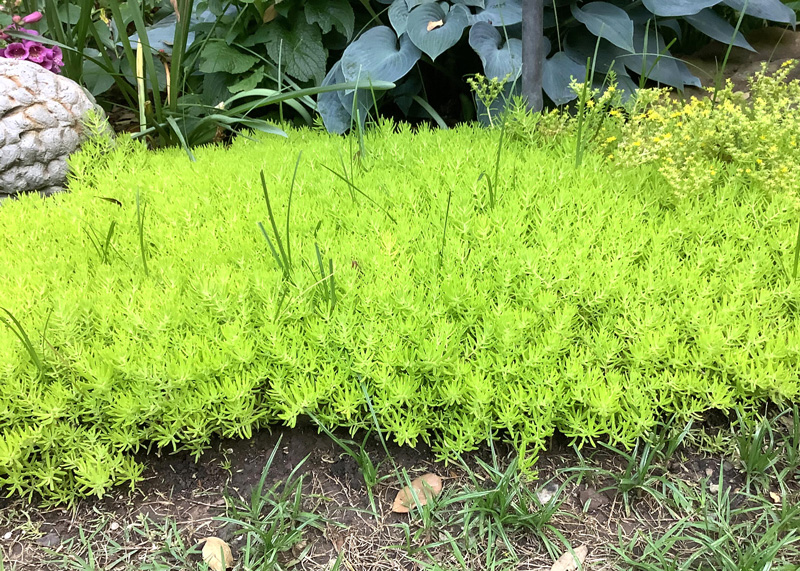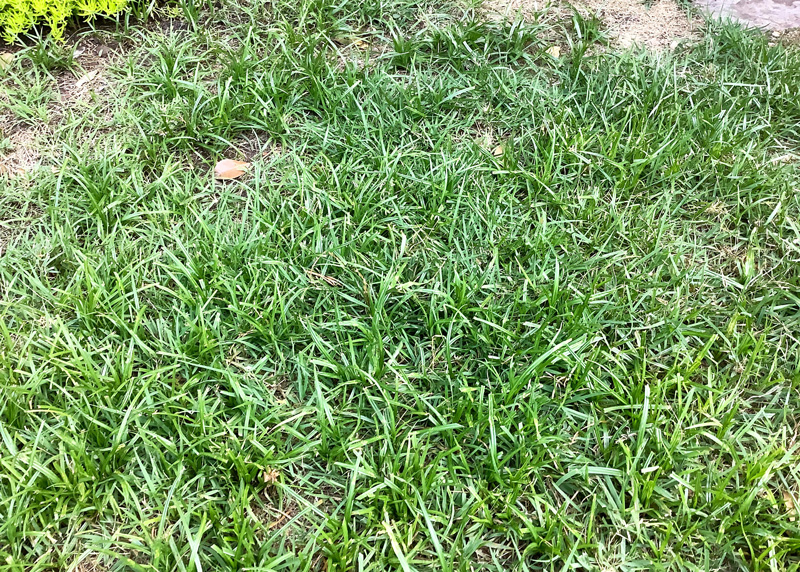Q&A – Ask Neil: June 1, 2023
(Please read these instructions carefully.)
Before you post your question, please look at recent issues to see if someone else has already asked it. You might find your answer there.
How to submit your question…
• Click the link provided below to post your question. After you submit your question, a new window will pop up giving you the address to which you can e-mail a sharp, high-resolution photo to accompany your question. Please do not send thumbnail photos in case I need to zoom in to see things.
• Click here to post your question.
• Please only post your question one time. We can only accept a set number of questions each week, and when we get duplicates it costs other people their chances.
• One question per reader, please.
• Please use this only for posting questions – not for standard emails.
• Watch for your answer in the following week’s e-gardens.
• I choose those of greatest general interest. For example, plant IDs seldom make the cut.
• I must have your first name or initials.
• I must have your city or county. (Texas is a very large state.)
QUESTION 1
WHEN DO WE TREAT FOR WHITE GRUB WORMS, AND WHAT PRODUCT SHOULD WE USE?
Question: When should we treat for white grub worms, and what is the best product for a bermuda lawn? Tom W., Plano.
Answer: In the Metroplex the ideal time to treat is late June (earlier in South Texas). However, since we are not encountering widespread outbreaks of serious white grub problems, I am not suggesting that everyone treat their lawns automatically. In fact, they are nowhere near the problem they were 30 or 40 years ago. It’s interesting how things rise and fall.
If you have lost turf to grubs, and if you are certain that grubs were responsible, then that would be your timing and Imidacloprid granules would be a good means of preventing their damage for the next generation. There are other labeled insecticides as well. It takes 4 or 5 grubs per square foot to do damage. If you have not had damage in the past couple of years, or if you do not see grubs in those numbers, I would not suggest treating. Of course, in late June the adults are laying eggs, so no small grubs will be visible yet. You won’t see tiny white grubs until late July or early August.
QUESTION 2
WHAT IS THE BEST TYPE OF LAVENDER TO PLANT IN MY AREA?
Question: What is the best type of lavender to plant in Denton County? Elizabeth K., near Lake Lewisville.
Answer: Having seen the fabulous lavender farms around Puget Sound in Western Washington state, I hesitate to say that any lavender is going to qualify as “best” in Texas. It’s one of the most difficult of herbs in my experience. It’s not fond of our heat, and it’s not fond of our high humidity and rainfall (in the eastern half of the state) or heavy clay soils, where those are a factor. Apparently, the Hood County Master Gardeners agree. Here is their information sheet on growing it. I see other stories claiming to have all the details you’ll need on growing lavender in Texas, but when I looked through them I realized they weren’t written by gardening authorities from Texas. Do a little experimenting and start small. Hopefully yours will do better than mine did.
QUESTION 3
WHAT CAN WE DO TO STOP NUTSEDGE IN A ZOYSIA LAWN?
Question: We sodded our back lawn with zoysia. It has become riddled with nutsedge. Our local nurseryman said it was because our lawn is partially shaded at some times of the day. We’ve tried spraying, but we are losing the war. Help! Judy F., Dallas.
Answer: I’m not sure why partial shade would be brought into the discussion. Did the nutsedge come in with the zoysia? (Oh, that would make me so unhappy!) It’s obvious that you’re trying very hard with your lawn and landscape. You didn’t mention what product you used, but when you mentioned that you sprayed, it made it sound like you expected typical results of applying a weedkiller and watching the weeds die fairly quickly. The product you’ll want to try is Image for nutsedge control. It’s actually the original Image product that was first in the line. It was so successful in sales that the company that acquired Image added other active ingredients for different purposes. You definitely want the original Image.
Apply it with a hose-end sprayer or a watering can and then soak it into the soil according to label directions. That is where Image is very different from other herbicides that you merely spray onto the weeds’ leaves. Image goes into the nutsedge plants through their roots and kills them out gradually over a period of several weeks. In fact, you will want to make a second application 30 days later. Nutsedge is a very difficult weed to eliminate, but I’ve had good luck with Image. I would definitely give it a try before I gave up. Even if you tried it before, try it again with these possible revisions in method of application. You may have to take a chance in using it around the sedum if it’s not listed on the label.
QUESTION 4
WHAT CAN I DO FOR BARE SPOTS IN MY ST. AUGUSTINE?
Question: I have bare spots in my St. Augustine in my front yard. It started on a smaller scale a couple of years ago, but it’s gotten worse. I’ve re-sodded, fertilized, watered, and it continues. I’ve paid landscapers to make it good but to no avail. What can I do? Jim H., Grayson Co.
Answer: Without a photo and with no more details it’s difficult for me to identify why a grass hasn’t grown for you. It could be something as basic as sprinkler heads that aren’t serving that area because they’re broken or repeated outbreaks of chinch bugs (which do come back to the same places each summer). But by far the most common cause that I’ve observed over my 53 years of advising Texas gardeners has been that shade has become denser in those areas. It can be subtle changes that homeowners don’t even realize, but the grass just fades away. Planting new sod doesn’t work because it’s still too shady, even for St. Augustine. Within 2 to 3 months the new grass has thinned or died out entirely. People will stand toe-to-toe with me and argue, but I’ve lived this experience myself. St. Augustine must have 5 or 6 hours of hot, direct sunlight daily. So perhaps that’s the issue.
QUESTION 5
WHAT KIND OF TREE WRAP SHOULD I USE?
Question: We have a new Shumard red oak that we planted a few months ago. What type of tree wrap should we use to protect it? Incidentally, I listened to your radio program as a kid. I was delighted to find out that you are still writing and answering questions. Sarah B., Lufkin.
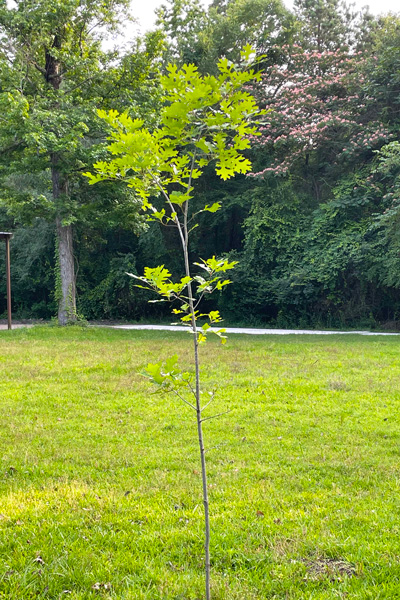
Answer: There are several types. Some are plastic that snap in place. Others are layered paper that are weather-resistant, capable of staying in place for 2 or 3 years. This is the type and brand I’ve used most of my career. I don’t believe it’s ever changed. If you have trouble finding it locally, it’s certainly available online.
I believe I would suggest also that you put a 2×2 stake alongside the trunk of your tree for a couple of years. It looks like it would probably be very supple and that it could break in a strong windstorm. I would prefer that type of stake to guy wires. Use plastic plant tie to hold it in place. It may even be difficult to wrap the trunk due to its thin nature. Don’t put it under too much pressure.

Tune me in on radio. I’m still doing four different programs. One, Plant Talk Texas, goes to more than 30 stations each weekday morning. I began it in 1978 and have just recorded program number 11,815. I also broadcast live over 30 stations Saturdays 11:06-noon, then on KLIF (570AM)1-3 on Saturday afternoons and WBAP (820AM) 8-10 Sunday mornings. All of them also live stream. The last three are available as podcasts on my website.
QUESTION 6
CAN THESE GARDENIAS BE SAVED?
Question: Is there anything I can do to save the two old gardenia shrubs on our cemetery plot? The cold spell really got them. The camellia in between came through in good condition. Jack K., Woodville.
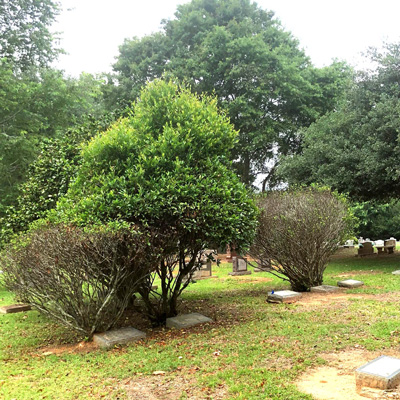
Answer: I looked at them closely, and it looks like they might be goners. Give them this summer to offer to put out new growth, probably from their bases. If they fail to do so, you’ll need to replace them in October. The Christmas freeze was a really bad cold spell. It came on the heels of February 2021 which did almost as much damage.
QUESTION 7
IS OUR CRAPE MYRTLE DEAD?
Question: We have a new crape myrtle that is about one year old. We asked the yard people to trim it last fall. Now it has several bare branches straight up in the middle and new growth from the base. Is it dead? Caddie M., Arlington.
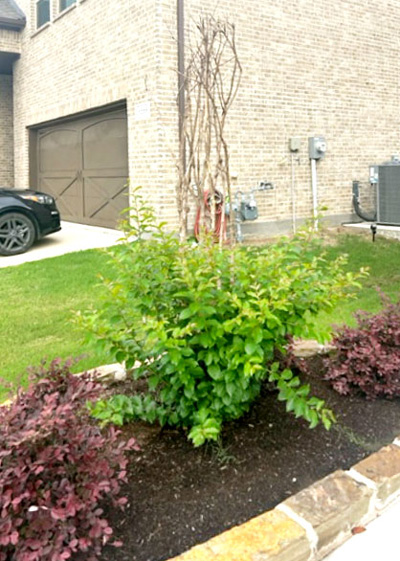
Answer: The top growth froze. You’ll need to retrain it into tree form. It will be quite easy and quick. Rather than retyping everything I wrote for the website of our Crape Myrtle Trails of McKinney website, here’s a link that tells you exactly how to do it. https://crapemyrtletrails.org/basic-care/
QUESTION 8
WILL THIS SOIL AROUND THE TRUNK HURT MY PECAN TREE?
Question: I moved into a house with a huge pecan tree. The prior owners added about 6 inches of soil around its base. The root flare is still visible. I’m wondering if this will hurt the tree. I’m not sure how long it’s been there. The tree seems to be healthy. Please advise. Greg E., Wood Co.
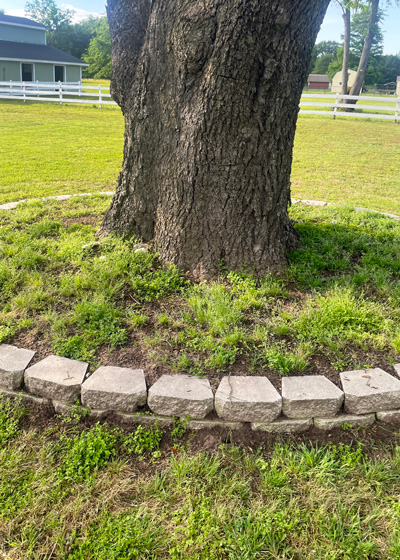
Answer: I’m still trying to figure out why people like to showcase the trunks of their trees like this. To my eye, it’s like wearing snowshoes with a tuxedo. At least it only covers a tiny percentage of the root area of the tree. It’s when soil is added over 30 or 40 percent of a tree’s root system that big problems develop a year or two later. As for the root flare, perhaps they were trying to conceal a surface root, but that doesn’t hold water. Surface roots just grow larger and larger and come up through the added soil anyway. It’s better to let things alone. If this were my tree, I’d open it all up and remove the soil. I’m not seeing much of the root flare at all. If I found surface roots that I felt were unsightly, I’d create a groundcover bed of liriope, English ivy, or purple wintercreeper to conceal them. I would extend the bed farther out from the trunk, and I wouldn’t place the trunk in the exact center like a bullseye. My bed would be irregularly shaped, perhaps like a kidney bean, and it would be at ground level or only very gently (1 or 2 inches) raised with no visible edging sticking up like a wall.
QUESTION 9
HOW CAN I PROTECT MY APPLE TREES FROM CEDAR-APPLE RUST?
Question: How can I protect apple trees in my home orchard from cedar-apple rust? Glen, McKinney.
Answer: (Glen called my radio program on WBAP this past Sunday. I told him I needed to do a bit of research on this question and that I’d post an answer here.)
This is an interesting fungus, and these two plants (eastern redcedar juniper and apples, also crabapples, hawthorns – not Indian hawthorns – and a few other species) are alternate hosts. One part of its life cycle develops on the eastern redcedars and another develops on apple leaves. However, the two trees must be in somewhat close proximity. I live in McKinney, as does Greg, so I know how many redcedars there are in our county (thousands), so this is going to be a daunting problem for anyone considering growing apples.
I did what I always suggest you do. I did a Web search for key words “university control cedar apple rust on apples.” By putting that word “university” in the search I got the most dependable information on the Internet. And, once again, Oklahoma State has really good help. The fact that they’re fairly close to Collin County helps, too. Here’s what I found for us, Greg: https://extension.okstate.edu/fact-sheets/cedar-apple-rust.html.
QUESTION 10
IS THE AGGIE HORTICULTURE FRUIT AND PECAN INFORMATION STILL AVAILABLE ONLINE?
Question: The TAMU Aggie Horticulture Web link to fruit and pecan fact sheets wasn’t working last Sunday. Is it active again?
Answer: I tried to give someone the link (https://aggie-horticulture.tamu.edu/fruit-nut/) to the incredibly valuable set of fact sheets from Texas A&M on virtually every type of fruit and pecan crops home gardeners and orchardists might want to grow in Texas, and the link said “Website is currently undergoing updates. Please check back later.” So, I asked the leader of Extension Horticulture with TAMU Dr. Larry Stein, who was one of the authors on many of the sheets. Larry tells me they will be updating the fact sheets, but that they definitely still will be available online. As of this week the web page seemed to be functioning.
QUESTION 11
WHY ARE REDCEDARS DYING?
Question: There are several cedar trees in the green belt behind me and many of them have been turning brown and dying. I know that beavers have had some effect by eating some of the bark on them, but they are gone and the trees are still dying. Any ideas? Steve K., Rockwall.
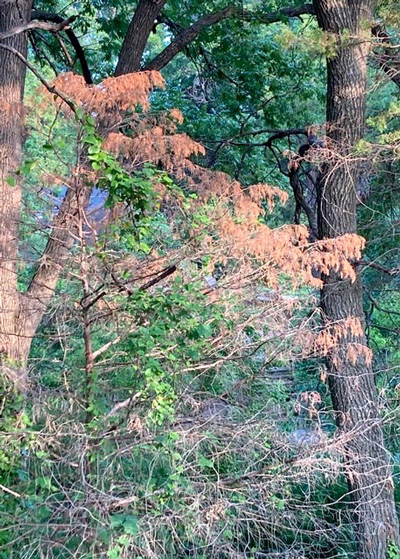
Answer: We built our house 47 years ago in the middle of a pecan forest in Collin County, perhaps only 25 miles from you. Eastern redcedars filled our woods. We positioned our windows to look out into the forest, and we had a deck built with several angles to extend out into the redcedars.
One by one, shade from the pecans caused the redcedars to thin and die. I saw trees that looked just like yours time and again. Now we have a clear vista across our creek for 150 yards. Still pretty, but very different from what we saw when we built our house.
I think the issue with your cedar trees has nothing to do with beavers, insects or diseases. I think the shade has killed out this tree.

